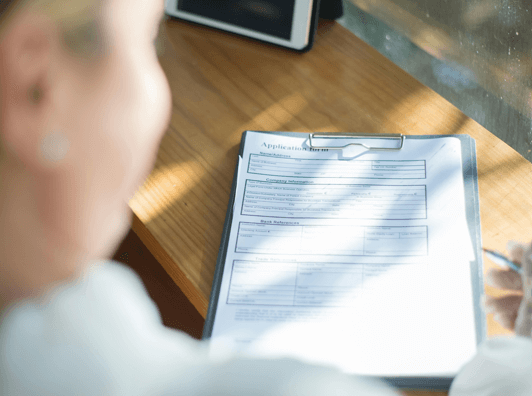Turning a raw parcel of land into a property with a recognized address is a critical step for any owner, yet the process can often seem confusing. Without a formal address, you cannot secure building permits, connect utilities, receive mail, or ensure emergency services can find you. In fact, many counties require an approved driveway permit before they will even begin the 1- to 6-week process of assigning a 911-compliant address. This guide explains exactly how to get an address for land, breaking down the essential steps from county applications to USPS verification. For landowners looking to bypass these complexities, renowned real estate investors Steve Daria and Joleigh offer a straightforward alternative by purchasing land for cash, simplifying the entire process. Learning how to get an address for land is the first step toward unlocking your property’s full potential. To navigate this process with confidence or explore a simple cash sale, book a free, no-obligation discussion with our team today.
Key Points
- Why an Address Matters: An official address is essential for more than just mail delivery; it is required to secure building permits, connect utilities such as water and electricity, and ensure that emergency services can locate you. Without it, you cannot get property insurance or finalize most development plans, making it the first step in transforming raw land.
- Who Assigns Addresses: Typically, your county’s E-911, GIS, or planning and zoning department is responsible for assigning a new physical address. The application process can span one to six weeks, a timeframe largely dependent on the county’s workload and specific requirements.
- What to Prepare: Before applying, you will need your property’s parcel identification number (PIN) or legal description, a basic site plan showing the lot boundaries, and the proposed location of your driveway or access point. Proof of ownership and a clear survey may also be required.
- Common Prerequisites: Most counties will not assign an address until specific conditions are met, such as obtaining a driveway permit or a building permit for the foundation. You may also need to physically mark the lot and the driveway entrance so an official can verify its location for mapping purposes.
- Verification and Final Steps: Once approved, you will receive an official address confirmation letter from the county, which you must use to get your address recognized by the U.S. Postal Service. Finally, you need to update your new address with utility companies, your insurer, and any other relevant agencies.
What does it mean to assign an address to land?
Assigning an address to land means your county officially creates a unique street number and name for a property that previously had none.
This new address is entered into official mapping systems, allowing emergency services, utility providers, and the postal service to locate the parcel precisely.
The address is issued by a county department, such as the E-911, GIS, or planning office, not the U.S. Postal Service, which only recognizes the address for mail delivery after the county approves it.

This guide on how to get an address for land starts with understanding this crucial first step.
Typically, you must apply with your parcel ID, a basic site plan showing the driveway location, and, in some cases, proof of a driveway permit.
The process can take one to six weeks and typically involves a small fee, though some counties may offer it for free.
It is important to remember that having an address does not guarantee the land is buildable; you still need to verify zoning, flood zones, and secure all necessary permits.
Your first step should be to contact your local county’s addressing office to confirm their specific requirements and procedures.
Get Started: Get Your Cash Offer Below…
We are direct land buyers. There are no commissions or fees and no obligation whatsoever. Start below by sharing where your property is and where we can send your offer…
Can you own land without having a registered address for it?
Yes, you can absolutely own land without a registered address.
Property ownership is legally recorded through a deed and a unique Parcel Identification Number (PIN) at the county courthouse, which is separate from having a street address.
Many vacant or undeveloped parcels exist only as a PIN on county maps until the owner begins planning for development.
However, without a physical address, you will face limitations, such as the inability to secure building permits, connect utilities, obtain insurance, or ensure that emergency services can locate you.
Learning how to get an address for land is the next step when you are ready to build or need services.
The addressing process is handled by your county’s E-911, GIS, or planning office, not the U.S. Postal Service.
It typically requires an application with a site plan showing driveway access and can take one to six weeks with a minimal fee.
Remember, an address does not guarantee you can build; you must still comply with all zoning, flood, and permit regulations.
If you plan to develop or sell your property, contact the county addressing office to confirm the required steps and documents.
What documents are required to apply for a new address?
- Proof of Ownership: You will need to provide a copy of the property deed or a recent property tax statement to prove you are the legal owner. County departments require this to ensure they are processing requests from authorized parties.
- Parcel ID or Legal Description: Your application must include the official Parcel Identification Number (PIN) or the full legal description as stated in your deed. This unique identifier is essential for the county to locate your exact property on its GIS maps.
- A Simple Site Plan: A crucial part of your application is a basic map illustrating the property boundaries, the location of the proposed driveway, and the placement of any structures. This visual guide is central to learning how to get an address for land correctly.
- Driveway or Access Permit: Many counties require proof that you have an approved driveway permit before they will assign an address. Knowing the specific steps on how to get an address for land includes checking if this prerequisite applies to you.
- Completed Application Form: You must fill out the official application form from your county’s E-911, planning, or GIS department, which includes your contact information. Submitting a complete and accurate set of documents is the fastest way to get your new address assigned.

How do local zoning and county regulations affect getting an address for land?
Local zoning and county regulations play a critical role in the addressing process, even though they don’t create the address itself.
Zoning rules determine what you can build and where, affecting requirements like driveway permits, access road standards, and minimum road frontage for assigning an address.
For instance, your county may require a site plan that is consistent with zoning rules and proof of legal access before it will even accept your application.
This guide on how to get an address for land emphasizes that regulations like floodplain rules or environmental overlays can also trigger extra reviews, extending timelines.
The address is officially issued by the county’s E-911, GIS, or planning department, a process that typically takes one to six weeks with a minimal fee.
However, needing a zoning variance or a new easement can add significant delays to this timeline.
The U.S. Postal Service only recognizes the new address for mail delivery after the county has completed its approval.
To avoid costly rework and delays, you should call both the planning and addressing offices early to confirm all specific requirements and steps for your parcel.
How much does it cost to get an address for land?
- County Addressing Fee: The direct fee for the address application itself is often low, typically ranging from $0 to $150, depending on the county. Some jurisdictions with more complex GIS systems may charge more, but this is the initial administrative cost.
- Driveway Permit Costs: A common prerequisite is securing a driveway permit, which can cost between $50 and $400. This fee varies based on whether the access point is on a county-maintained road or a state highway.
- Site Plan or Survey: You’ll need a site plan, which can be a simple DIY sketch for $0 or professionally drafted for $50-$300. If a full boundary survey is required for easements or unclear property lines, expect costs ranging from $300 to $1,200 or more.
- Mailbox and Signage: Once approved, you must install a mailbox and visible, reflective address numbers that comply with local codes. A basic mailbox setup costs $25 to $150, while the required numbers are typically an additional $10 to $40.
- Total Estimated Cost: The total expense when learning how to get an address for land depends heavily on your county’s specific requirements. Depending on whether a survey is required, the final cost, including all potential fees, can range from under $100 to over $1,500.
What should I update once I have the new address?
Once your county provides an official confirmation letter, your journey isn’t quite over; the final part of learning how to get an address for land involves updating your information across various agencies.
First, ensure that the county tax assessor’s records are updated and validate the new address with the U.S. Postal Service to confirm mail delivery.
Next, you must update your personal records, such as your driver’s license and voter registration.
It is also critical to notify all utility providers, including power, water, and internet services, as well as your insurance agent for any land or liability policies.
Don’t forget to inform your bank, employer, lenders, and any subscription or delivery services, such as UPS and FedEx, of the change.
Before submitting these updates, always refer to your county’s confirmation letter to ensure you use the exact, officially recognized address format consistently, thereby avoiding confusion.
If you have an HOA, be sure to update your records with them as well.
For personalized guidance on navigating your next steps after securing an address, schedule a free, no-obligation discussion with a knowledgeable advisor today.
**NOTICE: Please note that the content presented in this post is intended solely for informational and educational purposes. It should not be construed as legal or financial advice or relied upon as a replacement for consultation with a qualified attorney or CPA. For specific guidance on legal or financial matters, readers are encouraged to seek professional assistance from an attorney, CPA, or other appropriate professional regarding the subject matter.
